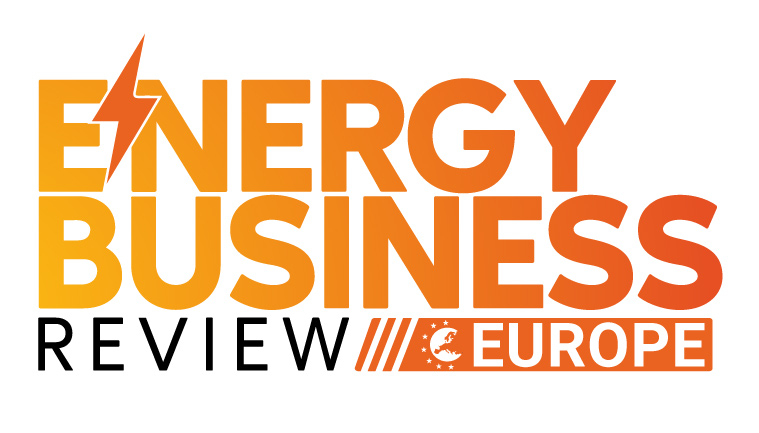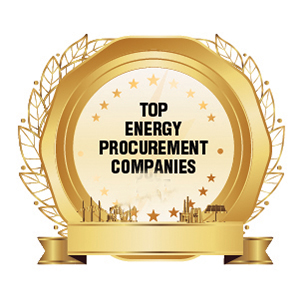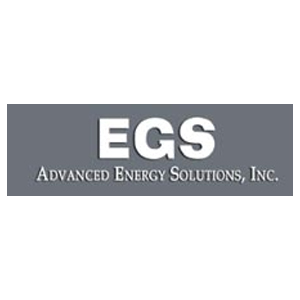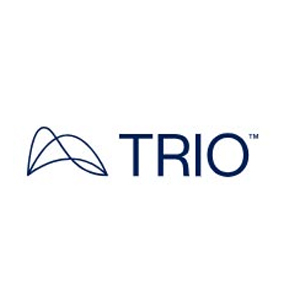\\\\ Top Energy Procurement Companies \\\\
\\\\\\\\\\ Top Energy Procurement Companies \\\\\\\\\\
-
Elite Energy Solutions
Elite Energy Solutions is a full-service energy consultancy that helps businesses in deregulated markets reduce costs through transparent, supplier-agnostic procurement and long-term account management. With proprietary quoting software and a client-first approach, Elite provides customized pricing, ongoing support and savings strategies from contract negotiation through renewal, all at no cost to the client.
-
NTACT Operations
A single-source EPC group providing procurement, construction, instrumentation, electrical, and engineering services for the oil & gas and renewable energy industries. They focus on safe, efficient project delivery, boasting expertise in fabrication, welding, and renewable energy facility development.
More in News
Exploring Alternative Fuels for a Sustainable Future
Friday, October 03, 2025
Fremont, CA: As the world grapples with climate change, pollution, and dwindling fossil fuel reserves, exploring alternative fuels has become crucial. Innovations in this area are paving the way for cleaner and more sustainable energy options for various sectors, including transportation and daily life. This transition is vital for reducing environmental harm while fostering economic growth, job creation, and energy independence. Investigating fuels like biofuels and hydrogen marks an essential step toward a sustainable future. As technological developments in biofuel approach the second and third generations, they are relatively more efficient and sustainable than their traditional counterparts. Newer biofuels are sourced from non-edible crops such as algae, agricultural waste, and algae-based oil. These sources enhance sustainability and scalability. Biofuels may further dominate the global energy market if refined biofuel production processes are perfected. Hydrogen fuel technology is growing in popularity; it is a clean and environmentally friendly alternative to gasoline and diesel used in transportation, industry, and residential heating. Hydrogen production, storage, and distribution technologies are continuously evolving into a viable option for the future. The automotive sector is mainly interested in fuel cells, which convert hydrogen into electricity. Hydrogen is expected to become an integral part of the energy mix, reducing carbon and fossil fuel dependency with infrastructure improvements. The development of electric vehicles (EVs) and the expansion of renewable energy sources like wind and solar power are revolutionizing energy consumption. The rapid growth of the EV market, combined with advances in battery technology, makes EVs more affordable and efficient. Battery storage innovations are crucial for storing and using renewable energy when demand is high, reducing reliance on non-renewable sources. These breakthroughs are propelling the shift toward the consumption of clean energy and the lowering demand for fossil fuels, ensuring a cleaner and more sustainable future. Second, innovative alternatives to fossil fuels have emerged, including synthetic natural gas and carbon-neutral fuels. These fuels are typically produced through carbon capture and storage, or CCS, which captures the carbon dioxide emissions generated by industrial processes and converts those into synthetic fuels. These technologies, using captured carbon to produce usable fuel, stand to reduce net emissions and, at the same time, provide a sustainable source of energy without being drawn from natural resources. Alternative fuels are scarce, expensive, and undeveloped. They compete with affordable fossil fuels and require more extensive infrastructure to support them. As the government and private sectors spend money on research and development, the economics of alternative fuels can be improved; hence, widespread adaptation is possible. It will help achieve the demand for hydrogen-powered vehicles and electric cars worldwide while sustaining existing infrastructures.
Sustainable Solutions: Factors Propelling Energy Consulting Services
Friday, October 03, 2025
Fremont, CA: Energy consulting has emerged as a vital industry in the global push toward sustainable development and efficient energy management. Factors including the increasing emphasis on renewable energy, regulatory pressures, rising energy costs, technological advancements, and the shift toward corporate sustainability drive the growing demand for energy consulting services. These factors transform the energy landscape, making energy consulting indispensable for organizations seeking to optimize energy use, reduce costs, and meet environmental goals. Regulatory pressures and policy incentives are other significant factors fueling the growth of energy consulting. Governments are implementing stringent energy efficiency standards and carbon reduction targets, compelling organizations to comply with these regulations. Consultants assist companies in meeting these requirements by conducting energy audits, identifying inefficiencies, and recommending solutions. In parallel, many governments offer financial incentives for energy-efficient upgrades and renewable energy adoption, further motivating businesses to seek expert guidance in accessing these benefits. Rising energy costs have also heightened the need for energy consulting services. Fluctuating energy prices can significantly impact operational expenses, especially for energy-intensive industries. Consultants help organizations mitigate these challenges by analyzing consumption patterns, identifying cost-saving opportunities, and recommending alternative energy solutions. The potential for substantial cost savings makes energy consulting an attractive investment for businesses. Technological advancements are reshaping the energy sector and creating new opportunities for energy consulting. Innovations such as smart grids, energy storage systems, and IoT-enabled devices offer the potential for unprecedented levels of efficiency and control. By leveraging data analytics, predictive modelling, and automation, consultants enable organizations to optimize energy consumption, monitor real-time performance, and make informed decisions. This technological evolution has expanded the scope of energy consulting, allowing it to address more complex and dynamic energy challenges. Corporate sustainability initiatives are another key factor driving the growth of energy consulting. As stakeholders, including investors, consumers, and employees, increasingly prioritize environmental responsibility, businesses adopt sustainable practices to enhance their reputation and competitiveness. Energy consultants assist organizations in developing and implementing sustainability strategies, such as reducing carbon footprints, improving energy efficiency, and achieving certifications. The efforts align with global sustainability goals and contribute to long-term cost savings and operational resilience. Urbanization and the development of smart cities further underscore the importance of energy consulting. The demand for sustainable infrastructure and efficient energy systems grows as cities expand. Energy consultants collaborate with urban planners, developers, and policymakers to design and implement energy-efficient buildings, transportation systems, and public utilities. Their expertise ensures that energy considerations are integrated into the planning process, paving the way for sustainable urban development. The rise of decentralized energy systems, such as microgrids and community solar projects, has created new avenues for energy consulting. These systems offer localized energy generation and distribution, enhancing resilience and reducing transmission losses. Consultants provide critical guidance in designing, implementing, and managing decentralized energy systems, helping communities and businesses achieve energy independence and sustainability.
Role of AI in Transforming the Energy Consulting Market
Friday, October 03, 2025
Fremont, CA: Artificial intelligence (AI) is revolutionizing the energy consulting market by enabling more accurate, efficient, and data-driven solutions to the energy sector's complex challenges. AI algorithms can analyze historical energy usage data and predict future consumption patterns. It enables energy consultants to help businesses and organizations reduce energy consumption and costs by recommending targeted energy-saving measures. It leads to improved energy efficiency, lower operational costs, and a smaller carbon footprint. AI enables energy consultants to develop more innovative grid systems that dynamically balance supply and demand by predicting energy generation and consumption fluctuations. ML models forecast energy production from renewable sources, allowing grid operators to anticipate shortfalls and integrate energy storage solutions more effectively. It creates a more resilient and reliable energy infrastructure for integrating large-scale renewable energy projects. AI systems can analyze data from sensors embedded in equipment such as turbines, transformers, and power lines to identify potential failures before they occur. AI helps energy consultants advise clients on optimal maintenance schedules, preventing costly downtimes and extending the lifespan of critical infrastructure. AI is driving advancements in energy trading and market analysis. AI-powered algorithms can quickly identify profitable opportunities, optimize portfolios, and predict market trends more accurately than traditional methods. The tools are particularly beneficial in renewable energy markets, where prices can be volatile and influenced by factors like policy changes, technological advancements, and natural events. AI is helping energy consultants advise clients on lowering their carbon emissions and transitioning to cleaner energy sources. AI can simulate various energy scenarios, enabling consultants to recommend the most effective strategies for reducing greenhouse gas emissions. The AI tools help consultants scale their operations by automating routine tasks, freeing resources for more strategic, high-value activities. AI enables consultants to offer more personalized services, tailoring solutions to each client's unique energy needs and goals. AI is increasingly pivotal in energy consulting by offering innovative solutions that drive efficiency, sustainability, and cost-effectiveness. AI is reshaping how energy consultants serve their clients, from optimizing energy consumption and improving grid management to enabling predictive maintenance and enhancing energy trading strategies. AI will remain a key enabler of the transition to cleaner, more efficient energy systems, empowering consultants to help their clients navigate the complexities of the modern energy market.
Significance of Battery Recycling for a Sustainable Future
Wednesday, October 01, 2025
Fremont, CA: As electric vehicles (EVs) and portable electronics become more prevalent, the demand for batteries—particularly lithium-ion batteries—has surged. While these batteries have greatly enhanced our daily lives, their disposal poses significant environmental challenges. Recycling batteries provides an environmentally friendly approach, enabling the recovery of valuable materials and minimizing the need for new mining operations. The Environmental Impact of Battery Disposal Improper battery disposal can have severe environmental consequences. Batteries often contain hazardous substances, including lead, cadmium, and lithium, which can leach into soil and water, leading to contamination if not managed correctly. When disposed of in landfills, batteries can release these harmful materials, posing significant risks to human health and ecosystems. Furthermore, producing new batteries necessitates the extraction of valuable minerals, such as lithium, cobalt, and nickel, often through environmentally damaging mining practices. The Importance of Battery Recycling Battery recycling offers several key benefits. It helps conserve natural resources by recovering valuable materials from used batteries, reducing the need for new mining operations and minimizing environmental harm. Recycling also reduces waste by diverting batteries from landfills, decreasing the amount of waste that contributes to environmental pollution. Additionally, the recycling industry supports economic growth by creating jobs and generating revenue from recovering valuable materials for use in new products. By promoting a circular economy, battery recycling facilitates the reuse and repurposing of materials, thus reducing waste and lessening the demand for new resources. Advances in Battery Recycling Technology Recent advancements in battery recycling technology have significantly enhanced its efficiency and sustainability. Innovations include hydrometallurgical processes, which utilize chemical solutions to extract valuable metals like lithium, cobalt, and nickel. Pyrometallurgical processes involve heating batteries to high temperatures to recover metals, while solvent extraction uses organic solvents to separate metals from other battery components. Additionally, researchers are exploring methods to recycle individual battery components, such as the cathode, anode, and separator, to further improve the recycling process's efficiency. Global Trends and Initiatives Governments worldwide are tightening regulations to promote responsible battery disposal and recycling, often supported by incentives such as tax breaks or subsidies to stimulate investment in recycling infrastructure. International collaboration is also crucial, with global organizations like the United Nations Environment Programme (UNEP) facilitating efforts to standardize regulations and share best practices in battery recycling. Concurrently, industry partnerships are emerging among battery manufacturers, recyclers, and technology providers, driving the development of innovative recycling solutions and fostering a sustainable supply chain. Regarding consumer engagement, education and awareness campaigns are essential for highlighting the importance of proper battery disposal and recycling. Such initiatives aim to inform the public about the environmental impact of their choices and encourage participation in recycling programs. Take-back programs implemented by many manufacturers and retailers are instrumental in ensuring that used batteries are collected and recycled responsibly. With the growing demand for batteries, battery recycling is set to become a pivotal component in securing a sustainable future. Significant contributions can be made toward a cleaner and healthier planet by recovering valuable materials and mitigating the environmental impact associated with battery production and disposal.
Promoting a Sustainable Economy in the Asia-Pacific Region
Wednesday, October 01, 2025
Fremont, CA: In recent years, growing public awareness about environmental protection in the Asia-Pacific (APAC) region has heightened demands for enhanced energy security and sustainable practices. The area has achieved significant advancements in reducing its reliance on fossil fuels and transitioning towards renewable energy sources. Over the past decade, growing public awareness of environmental conservation in the Asia-Pacific (APAC) region has heightened the need to enhance energy security and promote sustainability. As a result, the region has made significant strides in reducing reliance on fossil fuels and transitioning to renewable energy sources. These efforts are further supported by investments in innovative technologies such as carbon capture and artificial intelligence to reduce waste, enhance energy efficiency, and foster long-term environmental health and resilience. Carbon Capture Carbon capture technology reduces emissions across various high-polluting sectors, including power, manufacturing and transportation, by capturing carbon dioxide from fossil fuel power plants and industrial processes. It enables a significant global warming slowdown and helps mitigate several climate change impacts, supporting the transition to a more sustainable, low-carbon economy. Artificial Intelligence (AI) and Machine Learning (ML) In 2025, industries across APAC are expected to harness advanced technologies that analyze data collected from satellites and sensors, effectively tracking environmental factors such as deforestation and glacier melting. These industries are improving weather forecasts and optimizing energy management by leveraging the power of AI-driven predictive analytics. This technological integration streamlines operations, reduces costs and facilitates more informed decision-making. Renewable Energy Technologies The growing demand for energy conservation has driven numerous innovations in renewable energy sources, including solar, wind and hydropower. Solar power, in particular, is expected to become more cost-competitive, allowing it to be integrated into both large-scale utility projects and smaller residential applications. Wind energy, both onshore and offshore, is also projected to have notable growth with technological advancements in turbine design, making it more cost-efficient and reliable. Hydropower innovations are also experiencing substantial advancements, particularly in reducing the impact on local ecosystems while improving flexibility and efficiency in diverse applications like integrating with renewable energy grids. Applications of Clean Energy Technologies Technological innovations drive sustainability across various industries and applications by boosting efficiency and minimizing environmental impact. Green Mobility Solutions As the demand for electric vehicles (EVs) continues to grow, the transport industry in APAC is undergoing a dramatic transformation, with a strong focus on electrifying public transportation. Many countries in the region are increasingly adopting electric buses to reduce emissions and improve air quality in urban areas. Government policies and incentives, along with the development of a growing EV infrastructure, are supporting efforts to electrify fleets. This shift to clean transport helps reduce the carbon footprint and enhance energy efficiency. Greener Future with a Circular Economy The circular economy promotes sustainable living by emphasizing resource reuse, repair, and recycling and addressing global challenges related to waste production and resource depletion. This approach offers distinct advantages over traditional methods by reducing waste and cutting greenhouse gas emissions. From transforming plastic bottles into clothing to extracting valuable metals from discarded electronics, the circular economy continuously creates opportunities for innovation and sustainable solutions. Together, these technological innovations and sustainable practices drive energy transition, waste reduction and resource conservation in APAC, helping combat climate change and ensure long-term environmental resilience. The collective commitment of governments, industries and individuals is instrumental in accelerating these advancements and ensuring their enduring impact. The successful integration of these efforts will define a sustainable future, securing a healthier planet for future generations.
Advancing Sustainable Architecture in Europe
Wednesday, October 01, 2025
Fremont, CA: The pursuit of sustainable architecture is now a vital trend and foundational practice in our contemporary society. As climate change and depleting natural resources demand immediate attention, the construction sector, one of the primary sources of global carbon emissions, is facing heightened scrutiny. Europe is at the forefront of this movement, embracing eco-friendly building practices and creating innovative, energy-efficient designs. Principles of Sustainable Architecture Sustainable architecture minimises environmental impact throughout a building's lifecycle—construction, operation, and eventual demolition. Central to this approach are several key principles. Energy efficiency is pivotal in integrating LED lighting, solar panels, and high-performance insulation materials. Many European buildings also incorporate passive design strategies, leveraging natural light and ventilation to reduce dependence on artificial systems. Sustainable materials are another cornerstone, with a growing preference for recyclable, renewable, or bio-based materials like timber, bamboo, and straw bales due to their low carbon footprint. Water conservation efforts emphasise rainwater harvesting, water-efficient appliances, green roofs, and permeable surfaces to reduce wastage and enhance water management. Adaptive and flexible design ensures buildings evolve to meet changing needs with minimal reconstruction. Mindful landscaping promotes biodiversity, mitigates heat island effects through green spaces, and incorporates native vegetation. Energy-Efficient Building Designs in Europe Energy-efficient architecture transforms Europe’s built environment, significantly reducing greenhouse gas emissions while meeting ambitious sustainability goals. Passivhaus Certification, pioneered in Germany, focuses on ultra-low energy buildings achieved through airtight designs, robust insulation, and high-performing windows. Austria, Switzerland, and Belgium showcase innovative Passivhaus projects highlighting this approach's efficacy. Beyond this, net-zero and positive-energy buildings are gaining traction across Europe. Net-zero buildings produce as much energy as they consume, while positive-energy structures go further by supplying excess energy to the grid. The integration of renewable energy sources is another hallmark of European sustainable design. Rooftop photovoltaic panels, geothermal systems, and wind energy are widely adopted. Initiatives like the Barcelona Solar Ordinance, mandating solar thermal installations in new buildings, and Denmark’s extensive wind energy utilisation exemplify this commitment. Retrofitting existing structures also presents a unique challenge in Europe, where historical buildings must be upgraded with energy-efficient technologies while preserving their heritage. The EnerPHit standard addresses these needs by combining passive design principles with sensitive restoration efforts. Policies and Incentives Driving Change The European Union has established robust frameworks and incentives to accelerate the adoption of sustainable architecture. The European Green Deal commits member states to achieve carbon neutrality by 2050, prioritising green building practices. Similarly, the Energy Performance of Buildings Directive (EPBD) mandates energy performance certifications and nearly zero-energy building (NZEB) requirements for new and existing structures. Financial incentives, including subsidy programs and tax breaks, encourage homeowners and businesses to invest in energy-efficient systems. Together, these measures drive a transformative shift towards a more sustainable built environment across Europe. Technological advancements and societal shifts will shape the future of sustainable architecture in Europe. Innovations such as 3D-printed structures using low-carbon materials, urban farming within buildings, and smart grid-connected neighbourhoods are on the horizon. Moreover, collaborations between architects, governments, and stakeholders are crucial in scaling these efforts. Building green is not just about reducing environmental impact; it is about creating healthier spaces for people and the planet. Europe continues to set an example by investing in sustainable architecture and energy-efficient designs. As these principles become more ingrained and technologies evolve, the vision of a greener, more sustainable built environment is not only possible but imminent.
















